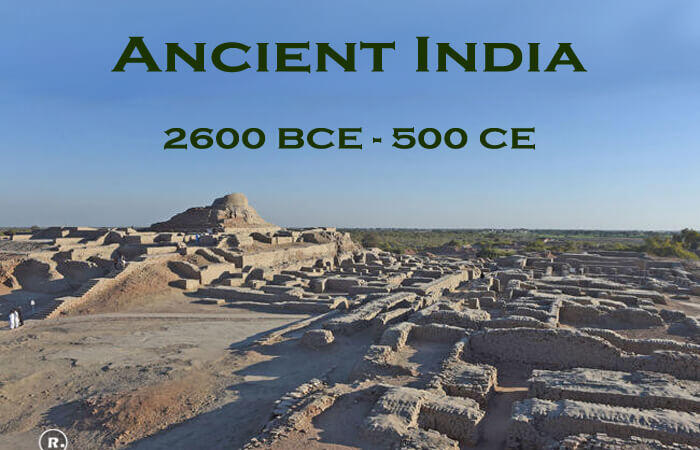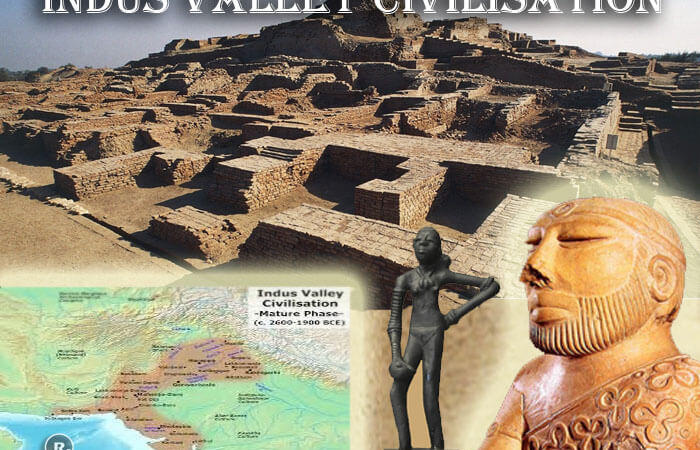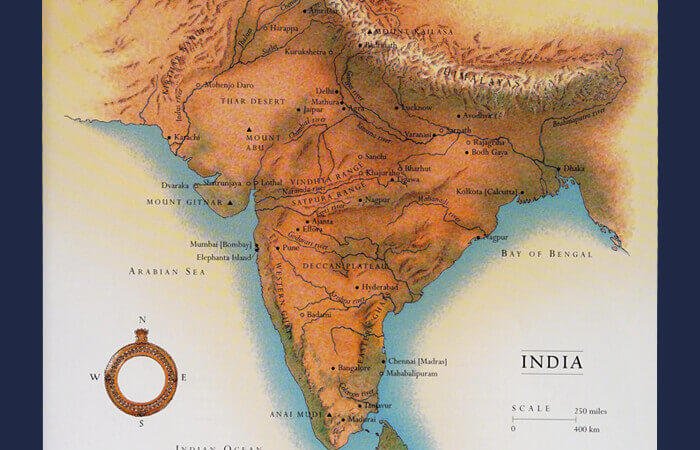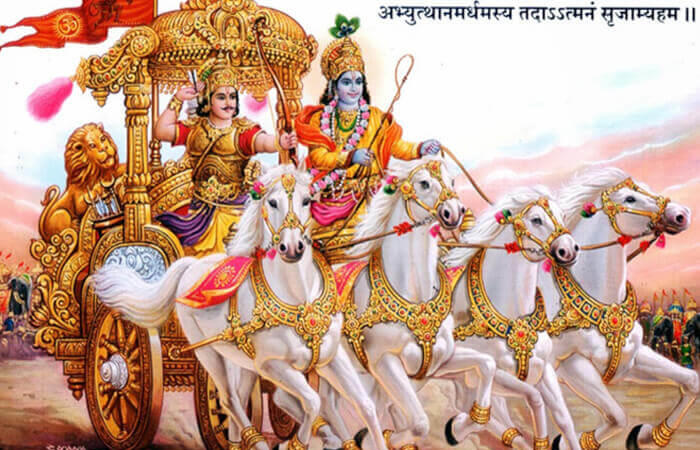Ramakrishna Paramahamsa (18 February 1836 – 16 August 1886)
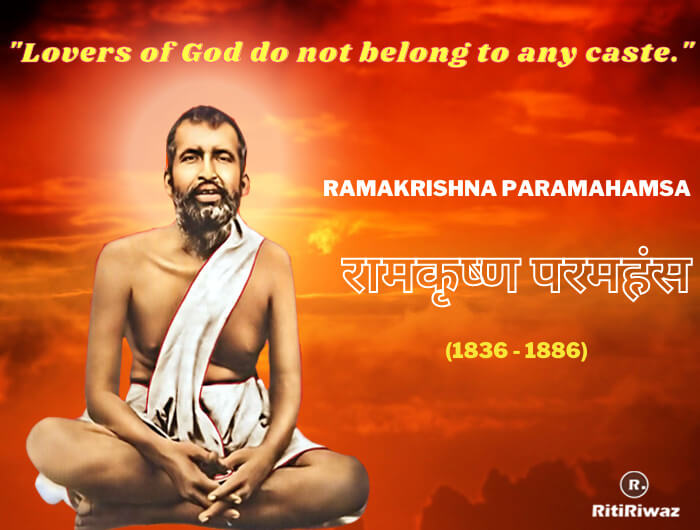
Ramakrishna Paramahamsa was a nineteenth-century Indian mystic, saint, and religious leader in Bengal. He is best known for having affirmed the harmony of all religions on the basis of his own richly varied mystical experiences and eclectic religious practices, both Hindu and non-Hindu.
His whole life was literally an uninterrupted contemplation of God. He reached a depth of God-consciousness that transcends all time and place and has a universal appeal. His intuition of the validity of different approaches to the worship of God and the religious paths led him to practice both Christianity and Islam during later periods of his life.
He was believed to be the incarnation of Lord Vishnu and referred to as “Paramahamsa” by his devotees, hence called Ramakrishna Paramahamsa. It was Totapuri who was one of Sri Ramakrishna’s spiritual instructors who gave the name Ramakrishna and the title Paramhansa which means the “Divine Swan”.
Fast Facts
- Birth: 18 February 1836 (Dwitiya, Tithi, in the Hindu month of Phalguna)
- Birth Name: Gadadhar Chattopadhyay
- Birth Place: Kamarpukur village, Hoogly district, Bengal Presidency
- Father: Khudiram Chattopadhyay
- Mother: Chandramani Devi
- Wife: Saradamoni Devi
- Guru: Totapuri
- Religious Views: Hinduism, Advaita
- Philosophy: Shakti, Advaita Vedanta, Universal Tolerance
- Death: 16 August 1886
- Place of Death: Cossipore, Calcutta
- Memorial: Kamarpukur village, Hoogly District, West Bengal, Dakshineshwar Kali Temple Compound
- Books: The Gospel of Sri Ramakrishna by Mahendranath Gupta, Ramakrishna the Great Master by Swami Saradanananda, The Great Swan: Meetings with Ramakrishna by Lex Hixon, Life of Ramakrishna by Romain Rolland, Ramakrishna and his disciples by Christopher Isherwood
- Disciple: Swami Vivekananda
- Followers: Keshavchandra Sen, Vijayakrishna Goswami, Ishwar Chandra Vidyasagar, Bankim Chandra Chatterjee, Ashwini Kumar Dutt
Early Life
Sri Ramakrishna was born on 18 February 1836 in the small village Kamarpukur, some miles away from Kolkata. Gadadhar’s parents, Khudiram and Chandramani, were poor and made ends meet with great difficulty. There were five children in his house, of which Sri Ramakrishna Paramahamsa was at number four. His parents were very simple in nature but being a Brahmin he was quite religious. Gadadhar was loved by the whole village.
When Shri Ramakrishna Paramahamsa’s father Khudiram was going on a pilgrimage to Gaya, he got an illustration of Lord Vishnu and where Lord Vishnu himself, in his next boy, would be incarnated as Lord Vishnu. In the same way, Lord Vishnu came to Ramakrishna’s mother Chandra Devi in the dream and said that her next child will be full of divine qualities and will be like God. Shortly thereafter, Chandra Devi gave birth to Sri Ramakrishna Paramahamsa.
Like a common child, Sri Ramakrishna Paramahamsa did not like going to school, reading, writing at all. Since childhood, he was more interested in drama related to Indian spirituality. He was handsome and had a natural gift for the fine arts. He disliked going to school, not interested in earning money only. He was attracted to folk and mythological stories that he had heard from his mother. He gradually learned Ramayana, Mahabharata, Puranas, and other holy literature by heart just by hearing it from priests and sages. He loved Nature and spent his time in fields and fruit gardens outside the village with his friends.
Shri Ramakrishna’s family got him married at a very early age. There was a big age gap between him and his spouse Ms. Sarada Devi. She also became a Sannyasi as she grew up. She was also a follower of Shri Ramakrishna. He respected and regarded her as a divine person. Ramakrishna forgot this world and continued his spiritual practices. The relationship between Ramakrishna and Sri Sarada Devi was never for a moment like the ordinary. They were divine beings, immersed in God. They never cared for the world or its paltry happiness.
Sri Ramakrishna Paramahamsa as a priest at Dakshineswar Temple
When Sri Ramakrishna Paramahansa was 16 years old, his brother Ramkumar took him to Kolkata to help him in his work. In 1855, Rani Rasmoni built the temple of Goddess Kali at Dakshineswar and Ramkumar was the chief priest in that temple. When he died, Sri Ramakrishna Paramahamsa was made the priest of that temple. Thus began the long, celebrated journey of priesthood for Gadadhar. It is said that Mathurbabu, witnessing Gadadhar’s piousness and certain supernatural incidents, gave the name Ramakrishna to young Gadadhar.
Sri Ramakrishna was completely absorbed in Kali’s attention and meditated on the goddess for many hours, during which he also forgot the responsibilities of a priest. Gradually, Sri Ramakrishna Paramahamsa was so busy meditating on Goddess Kali that she started seeing a grand aura around the Goddess.
He had realized several truths at the end of his sadhanas, among which were that he was an incarnation of God, that he had come to re-establish eternal religion on earth, that he would not have liberation, and so on. When the people of Bengal were getting very much attracted towards Brahmin and Christianity and Hinduism was in complete danger, at that time Shri Ramakrishna Paramahamsa not only saved the Hindu religion from being destroyed but made Hindu religion so powerful.
Once again Hinduism started attracting people. From now on he came to be known as Ramakrishna Paramahansa, and like a magnet, he began to attract real seekers of God. He taught ceaselessly for fifteen years or so through parables, metaphors, songs, and above all by his own life the basic truths of religion.
Sri Ramakrishna Paramahamsa Writing
Sri Ramakrishna Paramahamsa never wrote a single book in his entire life and never gave any discourse. He used to explain to people in a very simple language by taking examples of nature and daily life. When Paramahamsa meet some Sikhs, people were automatically attracted towards them. All the education he gave is written by his disciple Mahendra Nath Gupta in the book ‘Sri Ramakrishna Kathamrita‘ in Bengali.
In 1942, a book titled The Gospel of Sri Ramakrishna was also published in English on his education. This book still attracts everyone as much as it used to before winning.
Devotees of Sri Ramkrishna Paramahansa
Ramakrishna was motivated by a wandering monk known as Totapuri who initiated him in the Advaita Vedanta. Some of the followers of Ramakrishna are poet, playwright, theatre director Girish Ghosh, Swami Vivekananda, Zamindar Rakhal Chandra Ghosh, etc.
Swami Vivekananda brought the message of Vedanta to the whole world, he once again awakened to Hinduism, waking up all the people of India from sleep again. He was the one who founded the Ramakrishna Mission and worked to continue his master’s work.
Death of Shri Ramkrishna Paramahansa
Sri Ramakrishna Paramahamsa had throat cancer in 1885. He was shifted to a spacious suburban villa where his young disciples nursed him day and night and they have laid the foundation for the future monastic brotherhood known as Ramakrishna Math. But as time went by, his health also worsened. Later he was placed in a large house in Cossipore. Nevertheless, his health deteriorated further and he died on 16 August 1886 in his house in Cossipore.
Even after his death, his influence did not end, but his most effective disciple, Swami Vivekananda, continued to spread the education and philosophy given by his Guru with the help of the Ramakrishna Mission. His education was similar to that of the old sages, but the knowledge he gave has proved useful at any given time.
The four key concepts in Ramakrishna’s teachings were the following:
- The oneness of existence
- The divinity of human beings
- The unity of God
- The harmony of religions
Suggested Read: Ramakrishna Paramahamsa Quotes

